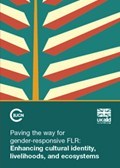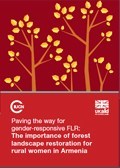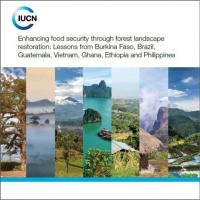Location
IUCN is a membership Union uniquely composed of both government and civil society organisations. It provides public, private and non-governmental organisations with the knowledge and tools that enable human progress, economic development and nature conservation to take place together.
Created in 1948, IUCN is now the world’s largest and most diverse environmental network, harnessing the knowledge, resources and reach of more than 1,300 Member organisations and some 16,000 experts. It is a leading provider of conservation data, assessments and analysis. Its broad membership enables IUCN to fill the role of incubator and trusted repository of best practices, tools and international standards.
IUCN provides a neutral space in which diverse stakeholders including governments, NGOs, scientists, businesses, local communities, indigenous peoples organisations and others can work together to forge and implement solutions to environmental challenges and achieve sustainable development.
Working with many partners and supporters, IUCN implements a large and diverse portfolio of conservation projects worldwide. Combining the latest science with the traditional knowledge of local communities, these projects work to reverse habitat loss, restore ecosystems and improve people’s well-being.
Resources
Displaying 56 - 60 of 142Paving the way for gender-responsive FLR: Enhancing cultural identity, livelihoods, and ecosystems
Licuri is a highly valuable tree species, both to local ecosystems and in traditional cultural uses, with a clear commercial niche. Its productive and sustainable uses are directly linked to ecosystem conservation and women’s empowerment—which is being further developed to great success. Project partners are working together to increase the mechanization of the licuri harvesting and production process, aiming to lessen the time-burden on women and enhance their livelihood potential.
Paving the way for gender-responsive FLR: The importance of forest landscape restoration for rural women in Armenia
In Armenia, the forestry sector and forest restoration policy development and decision making in natural resources management processes have been shaped as a result of women’s historical every day practices—which are also often drivers of deforestation and degradation—and yet women’s direct participation in these matters is frequently neglected. Forests in Armenia are state property and the management system is top-down, meaning that decisions are made at the government level and passed down through a hierarchy of power.
Enhancing food security through forest landscape restoration
The case studies from Brazil, Burkina Faso, Ethiopia, Ghana, Guatemala, the Philippines and Viet Nam highlight how forest landscape restoration (FLR) interventions enhance food security. They illustrate the ‘win-win’ solutions that can enhance land functionality and productivity, develop resilient food systems and explore the long-term potential outputs and enabling conditions for FLR interventions.
From theory to practice: a decade of co-management of pasture and other natural resources in Mongolia
Elinor Ostrom's work has been the principal inspiration for a number of research and development initiatives in Mongolia aimed at designing, testing and assessing viable forms of natural resources co-management that build on traditional nomadic practices. One such initiative, begun in 1999, introduced co-management in four different ecosystems of the country.
Assessing forest landscape restoration opportunities at the national level:A guide to the Restoration Opportunities Assessment Methodology (ROAM)
Restoration Opportunities Assessment Methodology (ROAM) will help countries understand how much of their land offers restoration opportunities, map where those opportunities are and determine which degraded landscapes offer the most value to society. Global analysis has found more than two billion hectares of land across the planet that could benefit from restoration. What do these opportunities look like at the necessary, landscape level?








